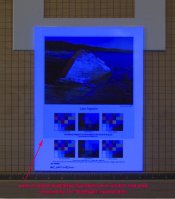Ralph;
I would pose this question from another angle. Although the US uses Chlorinated water, many counties use Ozone to treat water. It would be interesting to know the effect of Ozone vs Chlorine on papers, images and brighteners. These are a few among a lot of other questions that might be asked.
Ralph, UK water is often treated with Ozone as well as Chlorine, that's common in most of Europe because Chlorine doesn't kill Cryptosporidium. (I've no darkroom in Turkey).
Here in the Netherlands, where we have one of the best qualities of drinking water anywhere on the globe, ozone is almost always used in combination with activated carbon beds.
Ozone is best used before the activated carbon beds, as these will remove any by-products generated by the breakdown of organic material under the influence of ozone. In this case, if I understand it well, most if not all of the ozone will have been removed from the drinking water even before hitting the road to the client through the water mains. However, sometimes ozone is used as one of the last steps in disinfection of drinking water as well.
More and more, in the newest installations, an UV light disinfection is added as well.
In addition, I have four photographs from another test, which spent 10 years behind a south-facing window. The optical brighteners in these papers (also Ilford MGIV) are completely exhausted by now.
Ralph,
As you state here, the loss of optical brightener with time due to both illumination and attack by aerial pollutants like ozone, is probably a far bigger concern (or not, depends on how you look at it) than washing them out...
Aardenburg Imaging and Archives did a test that showed severe loss of OBs in just 1.5 years under normal keeping conditions, both due to light and presumably ozone from a dehumidifier. See the attached images.
Be careful: the darker blue area around the photo in the second attached image with the full photo visible and window matt lying beneath it, actually represents less optical brightener activity, if I understand it right, while in the other photo with the edge effect due to ozone, the lighter area is not caused by more optical brightener activity, but by full degradation of the OB and yellowing of the paper due to the ozone. The difference between
lighter blue fluorescence due to higher remaining OB activity under the removed matt in the first picture, and a
yellowed non-fluorescent blue edge in the second due to ozone destroying the OB, is easy to misinterpret...
Full report is here:
"A Year in the Life of an Inkjet Print"
And just look at the average offset printed (photo) book, most of them on coated paper stock with OBs, the paper will start to discolour from the edges onwards within a couple of years. I have many examples of these on my book shelves.
Photo paper manufacturers would do better to leave out OBs altogether IMO... as they will die anyway within a timespan of a decade or so, as you also stated













